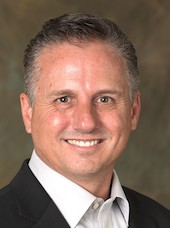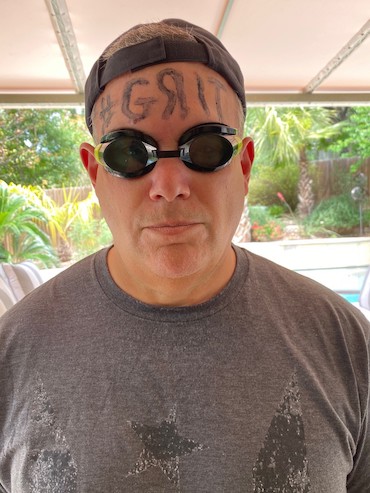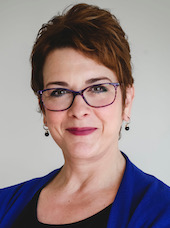10 minutes
Top leaders have gotten through the COVID-19 crisis by focusing on people—including the board—and leveraging video technology.
Credit union leaders certainly have learned a lot this year after many were ordered to shut their offices and send everyone home for weeks, months or an indeterminate amount of time to help prevent the spread of the coronavirus. Now, they are examining what leadership efforts worked well and trying to turn their new leadership and operational knowledge into a foundation for continued success.
Situational Leadership
The pandemic shutdown forced credit unions to dust off their business continuity plans and plunge into action. For most, it was an unusual and new experience. But for Brett Martinez, president/CEO of $5 billion Redwood Credit Union with 355,000 members in Santa Rosa, California, the pandemic was just the latest in a string of crises.
“We have had major natural disasters every single year since 2015, so this is just another disaster for us and, unfortunately, we have gotten really good at it,” he says.
Most of the disasters Redwood CU has faced have been wildfires in its area, but a power shutdown aimed at preventing fires caused the CU to close its main office in November 2019. This turned out to be a good test run for the pandemic response.
“We’re used to going into disaster mode, reactive mode,” he explains. “You roll up your sleeves and jump in, making decisions on the fly.”

Martinez considers himself a situational leader, modifying his approach to meet the circumstances. Situational leadership theory says there are four styles of leading: telling, selling, participating and delegating. The leader’s challenge is to match the correct style with the problem being faced and the preparedness of their employees to accept that style.
In a disaster situation, “you need an ability to make decisions fast and you need the financial confidence of the organization,” Martinez says. “You need the support of your board, and then you’ve got to surround yourself with people and ask lots of questions, and you’ve got to listen, listen, listen, listen. Then, bring people into your decisions and ask what they think.”
Take-Charge Leadership
During times of crisis, you want a take-charge leader, says Jim Austin, president of JH Austin Associates Inc., Chicago and a faculty member at CEO Institute I: Strategic Planning.
“When there is a fire, you want someone to stand up and say, ‘There is the exit.’ The problem is in more normal times, you want that ‘servant’ leader that builds a team. The challenge is the situational difference.”
Austin says, “We are sort of hard-wired, almost, for one style versus another,” but leaders can change gears if they have self-awareness and ask their teams to help them if they go too far with an authoritarian approach during a crisis. He notes that New York Gov. Andrew Cuomo has won plaudits for his forceful response to the pandemic. In contrast, Cuomo has been called a bully for taking the same approach in different circumstances in the past.
The current crisis offers leaders a chance to examine themselves and their teams, Austin says. “This is a time also to take stock of the leadership team. Do I have the right players around the table? What’s my succession plan? How will we bring in new talent? These should all be part of the discussion.”
Even while taking charge of a crisis and examining the staff team, top leaders need to involve their boards early on in the situation, underscores Michael Daigneault, CCD, CEO and co-founder of CUES strategic partner Quantum Governance L3C, based in Herndon, Virginia.
Daigneault says some CEOs have gone to their boards seeking more decision-making authority in certain areas—such as staff benefits, working from home policies and loan policies—to increase their nimbleness in responding to the immediate, crisis-driven needs of members and staff. In a crisis, these kinds of things can’t wait for discussion at the next board meeting, he emphasizes.
“It is prudent, within boundaries, to give the CEOs a greater degree of discretion to react in a timely fashion,” he says, emphasizing that the board still needs to be kept in the loop so it can give advice, consent and ratification along the way.
“The immediacy of the crisis won’t last forever,” he adds, noting that this shift in the balance of authority is temporary. “A new normal will emerge.”
Leading Toward Best Performance
CUES member Amy Downs, CCE, has a unique perspective on the current crisis, one borne from a crisis she lived through 25 years ago. Now president/CEO of $304 million, 26,000-member Allegiance Credit Union, Downs was working as a loan officer in April 1995 when she was one of 15 employees who survived the Oklahoma City bombing, which claimed the lives of 18 co-workers and more than 100 of the credit union's members.
While buried in the rubble for six hours before being rescued, Downs vowed to refocus her life and take charge, something she has done in a dramatic way, turning to fitness, becoming an Ironman, writing a book, Hope Is a Verb, and making motivational speeches.
With staff forced to work from home during the current pandemic, Downs has refocused their efforts. Allegiance CU uses a management technique that asks staff to pursue “wildly important goals,” beyond their normal routines.
“As soon as the pandemic hit, we pivoted and we changed our wildly important goal to ask every department to have meetings with their team each week to work on one thing they could do to make their department operate as the best virtual department in the credit union. We are realizing that in order to succeed we need to be the best virtual credit union.”
Connecting People Digitally
During these times, many CUs have turned to video and online media to reach staff.
“I am communicating with everybody on a more regular basis using the technology,” Martinez says. “We understand and realize that staff actually need it because they are at home, some of them by themselves, some of them with kids, or in all different kinds of situations and that ability to see and interact with other people is huge.”
At $2.7 billion University Federal Credit Union with 316,000 members in Austin, Texas, CEO Tony Budet, CCUE, has also used video, even using it to poke fun at himself and reach out to staff. (Watch two of these videos here and here.)
“It’s a matter of somehow connecting with them and letting them know that we love them, and that’s the right word,” says Budet, a CUES member. He started out doing two short videos a week, including one in which he dressed up as “GritMan,” with #gritman written on his forehead, to stress his point that the 720 employees need grit to get through the pandemic.

“I have just been astounded at the gratitude expressed by employees and I haven’t done anything but express my gratitude and my love for them,” Budet says. “Those are the kinds of things that I think are changing, how we as leaders connect with them, whether they feel like they have leaders who really do love them and care about them at a time like this.”
Budet says, “I’ve always thought leadership at the executive level was less about doing and more about being. That’s where 100% of the action is now. It’s all about being and making sure that your employees know that you’re there, that you care about them, that you will support them.”
Budet plans to retire from UFCU in 2 ½ years, but he’s glad he has been around for the pandemic. “I would not have wanted to miss this for anything. I feel such a sense of gratitude and appreciation for my people and how they have responded. Going through this with them is the highlight of my career.”
A similar transition of connecting with people digitally is taking place at Allegiance CU. “Everybody’s had to hop on the Zoom train,” Downs says with a laugh. Downs has used Zoom rooms to have informal chats with staff, including those in the drive-throughs who could rarely attend regular meetings. Some staff have enjoyed a virtual happy hour together, while others want a prayer group meeting to start their day.
Downs says before the pandemic, she had some supervisors who had mental blocks about people working from home. “One supervisor said, ‘Absolutely not.’ It would not work for her department. We even lost an employee who wanted to work from home and ended up going to work for another organization.”
But after a few weeks of forced working from home, all supervisors agreed—in a Zoom poll, naturally—that the idea was a good one. In the future, Downs hopes she and other staff can manage a blend of home and office hours.
Doubling Your Team Overnight
Michelle van Bakel, who manages the member advice center for $11 billion First West Credit Union with 250,000 members, in Langley, British Columbia, found the pandemic changed her leadership approach overnight.
Before the pandemic, she oversaw four offices and 45 staff. But when First West CU had to close its offices and restrict branch activities, she found herself managing 80 staff, all working from home. The team was almost doubled in size to handle the flood of new calls, and that posed challenges since most of the additional staffers were transferred from other departments.
Instead of offering coaching to team members face-to-face, van Bakel now has to use technology to connect with them. She has reorganized her expanded team into smaller workgroups that have a mix of veteran and new call center staffers, so they can share knowledge and support each other as they all work from home, wherever that may be.
“We set up a virtual lunchroom so that if they are grabbing a bite to eat, they can just sign in and have a fun chat and catch up with their peers. It keeps their connections happening,” she says.
Like other leaders in this article, van Bakel notes that the pandemic has highlighted the importance of meeting employees’ emotional needs.
“It’s important that team members feel they have support and realize that they have a whole life outside of work,” van Bakel says. “I think the personal emotions and reactions have been amplified with the pandemic.”
Taking the New Knowledge Forward
Budet says he doesn’t expect a return to the old normal. “I think everything will change. There is no going back,” he explains. “We have committed as an executive team that … we’re not going back to anything. We’re going forwards. We have informally coined the era we’re going to as ‘UFCU 2020.’”
Budet’s CU has a group of mid-level and senior leaders drafting recommendations about what the path forward should look like. “So much has come about that we like,” Budet says. “We don’t want to lose that.
“The most compelling change experienced over the last two months is shattering of all siloes leaders had previously established around themselves and their teams,” he continues. “We are one UFCU—750 colleagues together focused on and closely collaborating to meet needs of our members and community. We don’t want silo walls reconstructed as we evolve into UFCU 2020.”
Martinez also says he wants to ensure Redwood CU retains the good that has come from the current crisis.
“One of the things that I am very focused on personally is are many things that have changed for the good,” he says. For example, he had been trying to get a work-at-home program in place at the CU for about four years without success. With the pandemic closure, 400 people began working from home in two weeks with no real issues.
Indeed, leadership has much to do with moving people and an organization forward—sometimes in baby steps and sometimes in great strides.
“Leaders have to keep constantly changing and evolving,” Downs says. “There is a problem with leaders who think they are done, that they’ve arrived and they don’t need to learn anymore. I think you need to be constantly learning and growing as a leader.

“From what I saw in 1995 and what I see now, in a crisis you do have the opportunity for clarity and innovation,” Downs says. “That clarity that you get in crisis can really help you. So many times, we are complacent because growth is painful and when you are suddenly forced into it you get really clear, real fast on exactly what your problems are, what should have been fixed that you haven’t done, what needs to change.”
Daigneault observes that many credit unions have become conservative over time, but the pandemic crisis “doesn’t call for them to be conservative, it calls for them to be bold, to be brave and to be rebels again. I kind of like that. This is the age that credit unions are designed for.”
Daigneault thinks this crisis is a time for credit unions to shine and return to their roots of providing financial assistance to people in need. “This is a tremendous opportunity for boards and CEOs to find ways to serve credit union members, who in many instances are in the most acute need in their communities.”
Likewise, Budet notes that UFCU started in 1934 in the depths of the Depression. “When most credit unions were created the economic circumstances were very similar to now. This is why we were created; we were meant to deal with this. This is our time.”
Art Chamberlain is a writer based in Campbellford, Ontario, with almost 15 years of experience working with and writing about credit unions.





